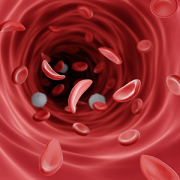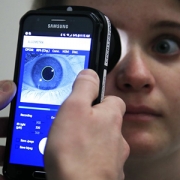Using psychological treatments to help pediatric pain management

Behavioral pain management can utilize approaches to address the experience of co-occurring acute and chronic pain.
There are different types of pain that people experience, such as short-term (acute) pain and longer term (chronic or persistent) pain. Just like there are different pharmacologic treatments depending on the type of pain, there are different psychological or behavioral therapies that seem more effective when tailored to a person’s type of pain. Furthermore, certain psychological treatments that are known to be helpful for managing acute pain may actually be unhelpful for a child dealing with chronic pain. A framework has not previously existed for the provision of psychological treatment when children are experiencing both acute and chronic pain.
In a new article, Megan Connolly, Ph.D., pediatric psychologist, and Steven Hardy, Ph.D., pediatric psychologist and director of Psychology and Patient Care Services for the Center for Cancer and Blood Disorders, both at Children’s National Hospital, outline recommendations for the psychological treatment of acute and chronic pain in children.
The hold-up in the field
Only recently have psychological therapies gained empirical support for their efficacy in treating pain conditions. Very little research, however, has been done on how to effectively tailor psychological treatments for groups experiencing both acute and chronic pain, likely because the pain conditions that involve both acute and chronic pain are rare.
In their new article, Dr. Connolly and Dr. Hardy draw attention to this issue by pulling together empirical evidence and clinical expertise to outline a framework for the psychological and behavioral management of co-occurring acute and chronic pain in children.
“This framework will help to guide the development of novel clinical interventions for individuals who experience co-occurring acute and chronic pain,” Dr. Connolly said.
Why we’re excited
The authors reviewed how behavioral pain management strategies can utilize complementary approaches to address the experience of co-occurring acute and chronic pain.
“It’s challenging that there are not many psychological treatments that were developed with the populations we see in mind,” Dr. Connolly added. “And it’s exciting there is now a more coherent framework for treating patients that have acute and chronic pain.”
Children’s National Hospital leads the way
Many clinicians see the unique challenges of treating co-occurring acute and chronic pain. However, this is the first article to propose a clinical framework for the psychological treatment of patients experiencing both types of pain.
The authors said they hope that their article helps to enhance the current dialogue around pain perception and pain burden to address the needs of co-occurring acute and chronic pain presentations.
You can read the full study, Clinical Considerations for Behavioral Pain Management in Co-occurring Acute and Chronic Pain Presentations, in the journal Clinical Practice in Pediatric Psychology.










